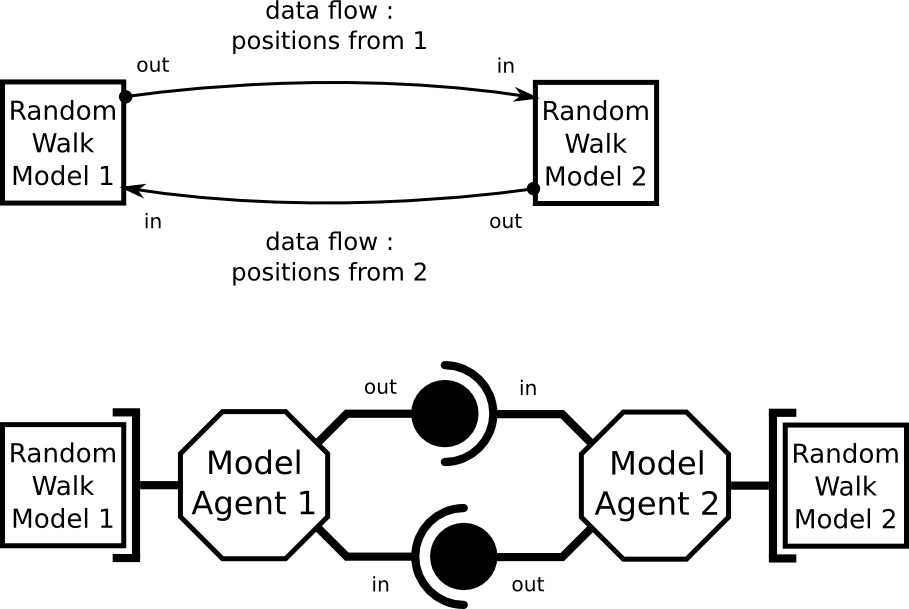The Netlogo models specifications available here and here. The exchanged data will be here the walkers positions (x,y) and the walker ID. The output port of one model is linked to the input of the other.


@Override
public void executeModel() {
// check if the operation has been instantiated
if (filterOp == null) {
initOperation_FilterOp();
}
int c = 0;
while (c < 2000) {
c++;
// read input data
this.readInputData();
// run a simulation step
modelArtefact.run();
// post output data
this.postOutputData();
}
}
@Override
public void readInputData() {
for (OutputPort<? extends SimulData> outputPort : couplingArtefactOutputPortList) {
try {
// check if the output port is the one in charge of receiving
// the sheep positions objects
if (outputPort.getClassO().equals(ExchangedTurtles2.class)) {
// ask it to get the turtles positions for the current
// simulation time
ObjectMessage obj = outputPort.read(modelArtefact
.getCurrentTime());
ExchangedTurtles2 inputData = (ExchangedTurtles2) obj
.getObject();
// set the input data to the model : i.e. the external turtles to add
modelArtefact.setInputData(inputData);
}
} catch (JMSException e) {
e.printStackTrace();
}
}
}
@Override
public void postOutputData() {
ArrayList<SimulData> outputdata = modelArtefact.getOutputData();
for (SimulData data : outputdata) {
if(data.getClass().equals(ExchangedTurtles1.class)){
/*
* Filter the turtles
*/
FilteredTurtles fT = (FilteredTurtles) filterOp.apply(data);
/*
* remove local turtles
*/
((RandomWalkModelArtefact1)modelArtefact).removeWalkers(fT.getFilteredTurtleList());
/*
* post turtles to exchange
*/
post(new ExchangedTurtles1(fT.getFilteredTurtleList(), 1000));
} else {
System.err.println("trying to post data with the wrong type of class");
System.exit(666);
}
}
}